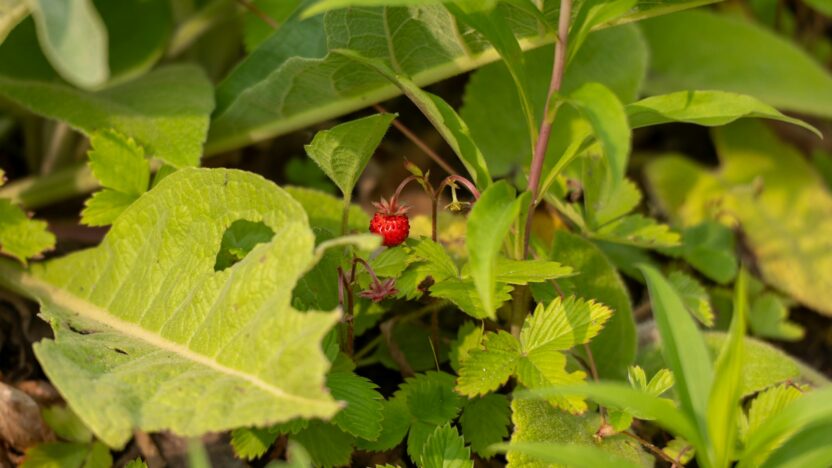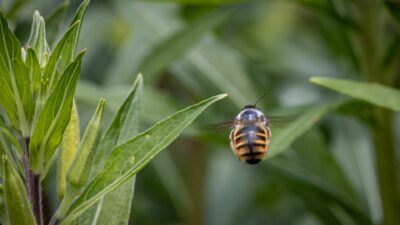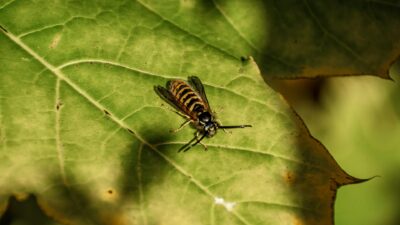Managing pests in an organic garden doesn’t have to be expensive or complicated. DIY pest traps are a cost-effective, sustainable way to protect your plants without resorting to chemicals. These traps target specific pests, reducing damage while keeping your garden eco-friendly. Plus, making your own traps is fun and lets you customize solutions for your needs. This guide walks you through creating and using DIY organic pest traps to keep your garden thriving. For more organic gardening tips, check out For Organic Life.
Pests You Can Target with Traps
DIY traps work best for specific pests that are drawn to certain baits or conditions. Here are some common garden pests you can trap:
- Slugs and Snails: These pests love moist areas and feed on leaves at night, leaving holes and slime trails.
- Aphids: Tiny sap-suckers that cluster on new growth, weakening plants.
- Fruit Flies: Small flies that damage soft fruits like berries or tomatoes.
- Earwigs: Nighttime feeders that chew leaves and hide in tight spaces.
Traps are most effective when you know which pests are active. Inspect your plants for signs like chewed leaves, sticky residue, or small insects. For example, slugs often hide under boards during the day, while aphids are visible on stems. Identifying your pests helps you choose the right trap design.
Making Simple DIY Pest Traps
Creating your own pest traps is easy with household items. Here are three effective traps to try:
- Beer Trap for Slugs: Slugs are attracted to the yeast in beer. Bury a shallow container, like a yogurt cup, in the soil so the rim is at ground level. Fill it halfway with cheap beer. Slugs will crawl in and drown. Check and empty the trap daily.
- Sticky Traps for Aphids and Whiteflies: Cut yellow or blue cardstock into small squares (pests are drawn to these colors). Coat one side with a sticky substance like petroleum jelly or Tangle-Trap. Hang or stake near affected plants. Replace when covered with pests.
- Fruit Fly Trap: Mix 1/4 cup apple cider vinegar, a few drops of dish soap, and a tablespoon of sugar in a small jar. Cover with plastic wrap, poke small holes, and place near fruit crops. Flies enter but can’t escape.
Always use non-toxic materials to keep traps organic. Check traps regularly to prevent them from attracting more pests or harming beneficial insects like bees.
Placing and Maintaining Your Traps
Proper placement and care ensure your traps work effectively. Place traps near affected plants but avoid areas with heavy beneficial insect activity, like flowering herbs. For example:
- Slug Traps: Set near lettuce or hostas, where slugs are active, and bury them in shady, moist spots.
- Sticky Traps: Hang near tomatoes or peppers, just above plant height, to catch flying pests.
- Fruit Fly Traps: Place near berry bushes or fruit trees, away from pollinator-friendly flowers.
Check traps daily or every few days to empty or replace them. For beer traps, refresh the bait every 2–3 days to keep it attractive. Clean sticky traps or make new ones when they’re full. Keep traps away from windy areas to prevent spills or tipping. Regular maintenance ensures traps stay effective and don’t become a nuisance.
Combining Traps with Other Pest Control Methods
Traps work best as part of a broader pest control strategy. Pair them with other organic methods for better results:
- Companion Planting: Grow pest-repelling plants like marigolds or garlic near your crops to reduce pest pressure.
- Hand-Picking: Remove large pests like caterpillars or slugs by hand in the early morning or evening.
- Organic Sprays: Use neem oil or soap sprays on heavily infested plants, but apply sparingly to avoid trapping beneficial insects.
- Healthy Soil: Strong plants resist pests better, so enrich soil with compost and mulch regularly.
For example, use beer traps for slugs while planting garlic nearby to deter them further. Sticky traps for aphids can be paired with ladybug releases to tackle infestations. Combining methods creates a layered defense, keeping your garden balanced and productive.
Monitoring and Adjusting Your Trap Strategy
To get the most from your traps, track their effectiveness. Check which traps catch the most pests and whether plant damage decreases. For example, if beer traps fill quickly, you may have a large slug population—add more traps or focus on reducing moist hiding spots.
If a trap isn’t working, try a different design or bait. For instance, if fruit fly traps catch few pests, switch to red wine vinegar instead of apple cider. Adjust placement based on pest activity—move sticky traps closer to infested plants if needed. Keep a garden journal to note what works and what doesn’t.
Seasonal changes affect pest behavior, so adapt your strategy. Slugs are more active in spring, while fruit flies peak in summer. Regular monitoring lets you stay ahead of infestations and refine your approach.
Crafting a Pest-Smart Garden
DIY organic pest traps are a creative, sustainable way to protect your garden. By targeting specific pests, making simple traps, placing them strategically, combining methods, and monitoring results, you can keep your plants healthy without chemicals. Have fun experimenting with trap designs and share your successes with other gardeners. For more eco-friendly ideas, visit For Organic Life. Your organic garden will flourish with these smart, homemade solutions.




